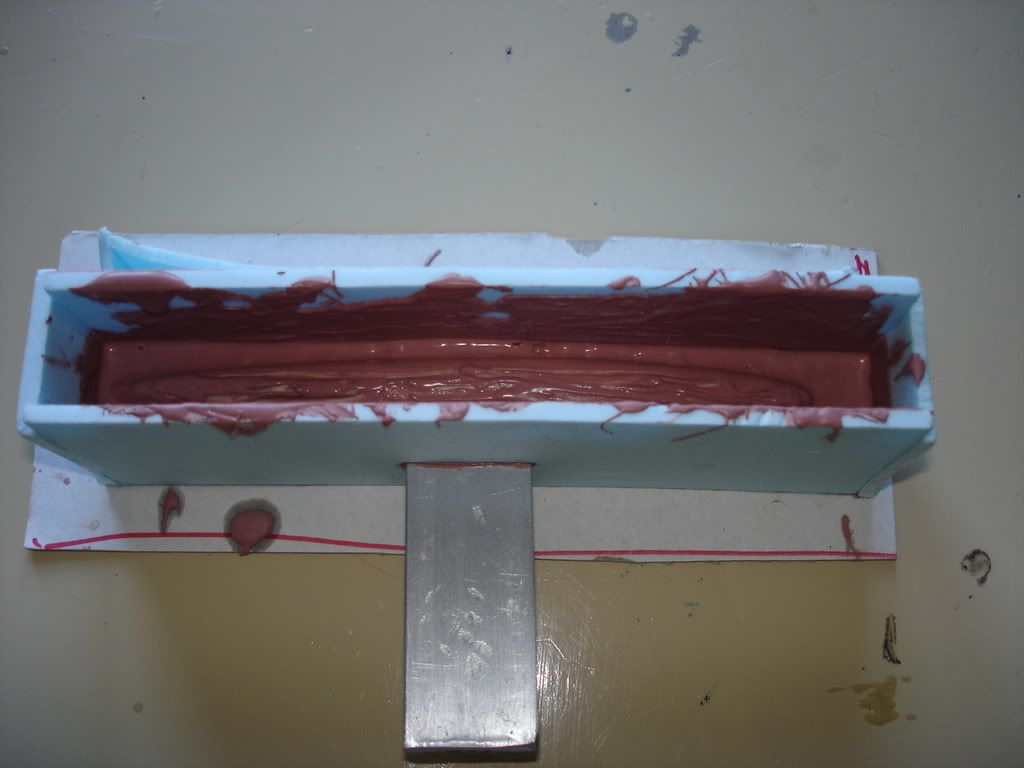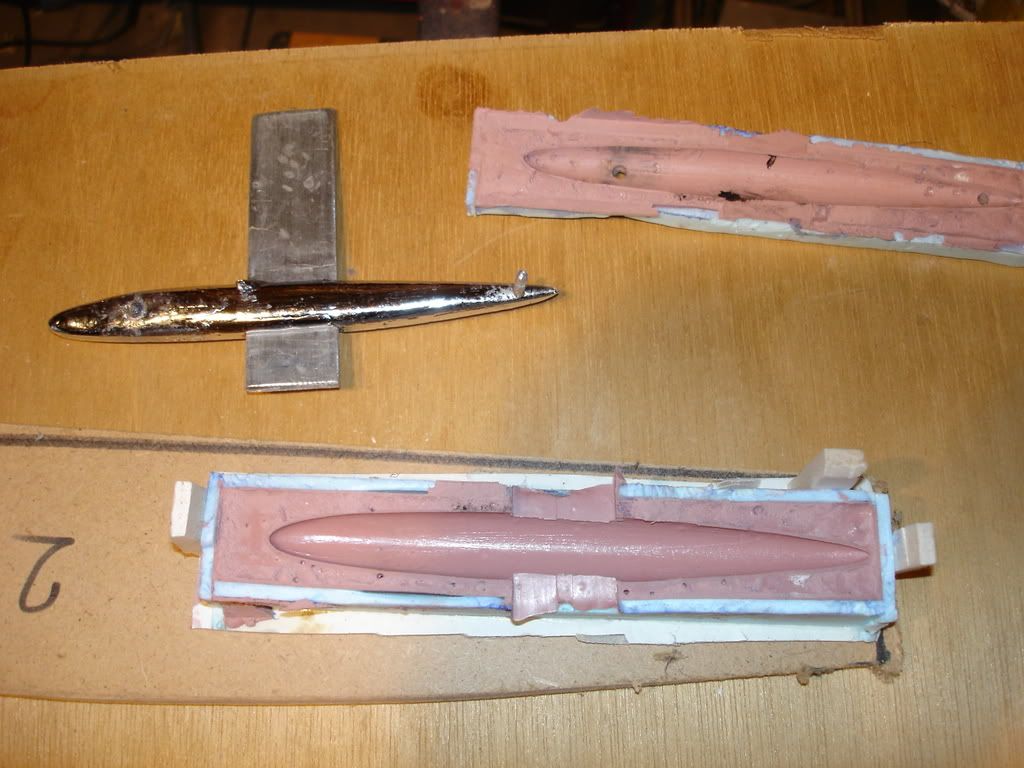Flavio,
I must apologise up front for this being a 100% wordy explanation, but I have no other photographs other than those you have seen. I will remedy this with my next moulding.
For the bulb shape I use Marko Mijic’s Bulbcalc spreadsheet from a link in Lester Gilbert’s pages. This allows you to design any number of aerodynamic shapes - I normally use the default NASA 00XX shape from the drop down list - and any weight/size combination. Footy size bulbs are below the minimum default weights, although you can cheat to overcome this limitation.
I then turn up the shape on a small lathe - sorry about that - complete with an integral pouring section at the tail end.
The moulding process is very similar to yours using Plaster of Paris except I do it in two halves. I make up two identical moulding boxes from MDF board, one with a bottom and the other just the sides with the corners suitably stiffened. First coat the pattern with vaseline or grease and line the box with kitchen film. Hold the box components together with tape to make it easier to remove the paster cast. Then nearly fill one half of the box with the plaster and quickly insert the pattern up to its half-way point along the centre of the box and touching the box end at the pouring feature. Before the plaster sets insert a couple of large ball bearings up to half their diameter, also covered in grease, one near each corner of the box. These ball bearings will act as location features for the two halves of the box later on.
When the plaster has solidified make sure you can release both the pattern and the ball bearings. Ensure the pattern is clean and recoat it and the upper surface of the bottom mould with grease ensuring the ball bearing holes are greased too. Reinsert the pattern but not the ball bearings. Locate the box with only the four sides over the lower box and then fill with another plaster mix.
When this mix has solidified gently separate the two halves of the box and remove the pattern and the box sides. You now have two halves of the pattern and a moulding box with little indentations in one half and pimples in the other - these are the location features.
These plaster mouldings now have to be dried completely. This is probably more important with this enclosed method of casting that with your semi-open method. If there is any appreciable moisture left in the plaster then when you pour in the lead the moisture will try to evaporate and cause bubbling of the lead which my blow back up the feeder hole or even crack the moulds. I generally put the plaster casts in the kitchen oven at about 150 degrees for a couple of days. This isn’t too expensive as at this very low heat the thermostat keeps tripping out ! !
When dry, hold the two halves together with a small clamp and stand it vertically on a large sheet of cardboard in case of any spills. Like you, I heat up the lead over a kitchen ring – although not as clean as yours – and I just use a small seamless tin can with a poring spout formed by pinching with a pair of pliers. The handle is a small locking wrench. When the lead is up to pouring temperature and is good and shiney – 10 or 15 minutes after it has all melted - very carefully and slowly pour it into the mould.
I have experimented with separate breather holes and risers and also poring with the box on its side or at a slight angle, but in the end the most reliable method is just to pour vertically directly into one end. Just ensure that feeder hole is big enough and that you pour slowly enough to allow both the lead to go in and the hot air to come out. Be prepared for the odd disaster before you perfect the technique. You’ve seen the surface finish I get – not very good. But after a good sanding it looks fine although not as good as Andrew’s. I then dig-out the fin slot with small drills and a milling cutter. Andrew’s system of using a grease coated steel bar looks good, but I don’t have the confidence in casting the two half mouldings accurately enough to ensure that the bar remains in the middle of the finished bulb. I have the drills and the milling cutter so I use those.
I trust is of some help.
Cheers,
firstfooty

 )
)
